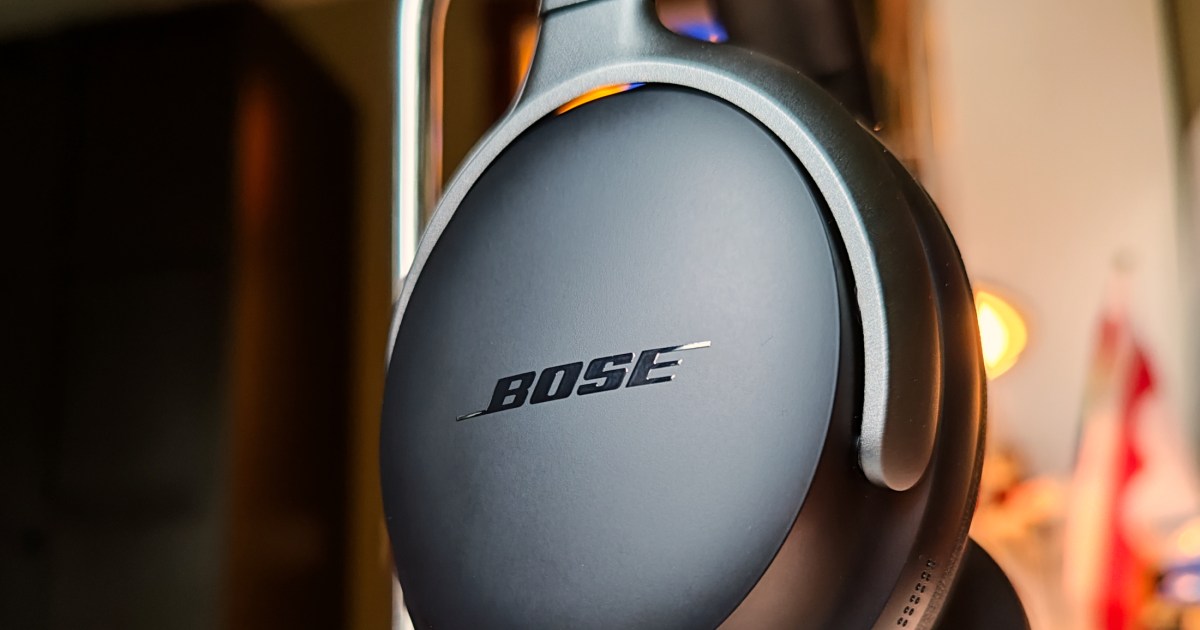The trade war between the U.S. and overseas countries like China no longer poses a theoretical risk of price increases on audio gear — those higher prices are here. Bose told Digital Trends that starting Monday, May 12, it will bump the price of its flagship QuietComfort Ultra Headphones from $429 to $449, while its sleek SoundLink Home Bluetooth speaker will increase from $219 to $229.
Bose might be the best-known audio brand so far to announce price increases for its U.S. retail customers, but it’s far from the only one. Onkyo told me its new powered speakers, which it debuted at CES 2025, are each going up by $50: The GX-30ARC is now $349 per pair (previously $299), and the smaller GX-10DB is now $249 per pair (before, it was $199).
We don’t like to raise prices, but the current tariff context requires it.
Ultimate Ears’ parent company, Logitech, says it has announced “a set of targeted price increases on select products in the U.S.,” with an average increase of roughly 10% across affected devices. It pointed out that some prices remain unchanged.
Each company I heard from struck an apologetic tone in its response. “We don’t like to raise prices,” Logitech said, “but the current tariff context requires it.”
“We’re doing everything we can to minimize the impact of global trade dynamics on our products,” Bose said, “we’ll be keeping price increases to a minimum and avoiding a one-size-fits-all solution.”
In some cases, new products have arrived with higher prices than expected. When Soundcore released its latest wireless earbuds, the Liberty 5, at $130, it had to increase the price of the more capable Liberty 4 Pro to prevent buyers from ignoring the Liberty 5 (the Liberty 4 Pro was also $130, but is now $150).
A limited runway
For now, some brands are sticking to their existing prices. New York City-based boutique audio company Master & Dynamic’s CEO, Jonathan Levine, told me his company has no current plans to increase prices on its family of premium wireless headphones and earbuds.
Levine feels that companies should resist the urge to panic. Pointing to the current 145% tariff on Chinese-made goods as unsustainable, he hopes “cooler heads will prevail.”
There are some signs that the administration is ready to relent — at least a little. On May 9, President Trump acknowledged that the tariff should be lower, touting an 80% rate in a social media post, according to CNN.
Still, 80% is too high to avoid pricing changes, and Levine acknowledged that he only had enough non-tariffed inventory to last until mid-June, at which point he may be forced to reconsider Master & Dynamic’s pricing.
I reached out to Apple, Sennheiser, Klipsch, and Sony to get their reactions, but none responded by the time I published this story. From what I can see so far, they’ve all kept prices as-is. However, early leaks suggest that Sony is going to charge up to $50 more for its as-yet-unreleased WH-1000XM6, a move that is probably tariff-influenced, given that the leaked images look a lot like the current $400 WH-1000XM5.
Unintended consequences

The threat of higher prices might drive a short-term buying frenzy of sorts. Levine has observed a considerable uptick in e-commerce activity in recent weeks, which he suspects is partly driven by people wanting to avoid paying more. Those who may have been on the fence about buying are now taking the plunge.
For some companies, a surge in buying could provide some much-needed cash to pay the tariffs as their products hit U.S. ports of entry.
For others, the economic situation has created too much uncertainty and pressure. In addition to creating and selling their own branded products, Master & Dynamic also collaborates with other companies — sometimes publicly, and sometimes in stealth mode. Levine said that one of those projects has been suspended and couldn’t say when it might resume.
In a rare reversal of preferential pricing, the U.S. tariffs have made it less expensive to buy these high-tech items in Canada.
When Soundcore sent me its Canadian pricing for the Liberty 5, I had to double-check that there hadn’t been a typo. At $140 Canadian dollars, you can buy the Liberty 5 for the equivalent of $101 USD north of the border.
Buy now or wait a long time?
Prices are going up. That much is obvious. But which products will be affected and by how much is harder to gauge. Buying now to save on a future increase is a logical response, but there may be another reason to avoid a wait-and-see approach. For some products, even a much lower tariff environment would still be unviable.
Companies could divert excess inventory to other markets while reducing the manufacturing of new inventory. Few brands have the size needed to spin down and then spin up their factory output quickly enough to jump back in with more inventory when conditions improve. Once these products leave physical and virtual shelves, it could be a while before they return.

